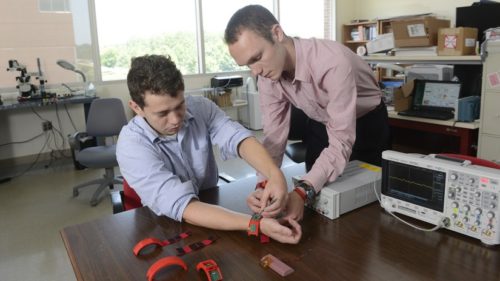One of the most common misconceptions that the general public has as to exactly what public health organizations, such as the Centers for Disease Control and Prevention (CDC), actually do is in thinking that they only deal with epidemics and communicable diseases such as HIV, STDs and influenzas. Actually, that is probably the most publicized aspect of what they do.
However, the CDC is also involved in all aspects of general fitness from exercise to diet to proper use of pharmaceuticals and so someone graduating with a Masters in Public Health online from institutions such as the University of Arizona, Zuckerman College of Public Health may actually be involved with ways in which to reduce obesity in the United States They may also be tasked with ways to promote increased levels of exercise. Because of this, wearables have now become a focus of one branch of the CDC.
What Exactly Are Wearables?
If you have any kind of disease whatsoever that requires constant monitoring and communication with your health care provider, you may already be familiar with the concept of wearable devices. Wearables are actually small pieces of technology you wear on the body that communicate through a mobile device to collect vital information in real time in regards to one or more aspects of your health.
That information is then forwarded to your healthcare provider who will go over the data and make a decision as to whether or not you can be left as is or seen in the office. In addition to wearables designed to collect information regarding specific diseases and conditions, there are also fitness devices for those looking to improve their health with regular and monitored exercise.
Why the CDC Would Need to Gather This Data
From time to time you see a warning pop up that the FDA (Food and Drug Administration) or the CDC advises you to drink more water, get out and walk more, consume fewer fats or participate in an aerobic form of exercise. Having done the research over a very long period of time, these bits of advice are based on statistics that indicate what we are doing wrong, or right, as a society. Since there is such a huge focus on fitness, someone with a Master of Public Health degree would be the ideal person to promote wearables to help gather, collate and act on the data being provided. Technology certainly has its place in fitness and that’s why the CDC should take advantage of current technology as well as be an integral part of the research into how best to use it to promote higher levels of fitness as a society.
While there are wearables that are sold as part of a fitness regimen, especially to runners who monitor their breathing and heart rates, more could be done to offer them to endangered groups within the general population. This is something the CDC and FDA should take a long look at and if you are interested in promoting public health, it may very well be a good specialty for you to pursue.
 Gearfuse Technology, Science, Culture & More
Gearfuse Technology, Science, Culture & More



